
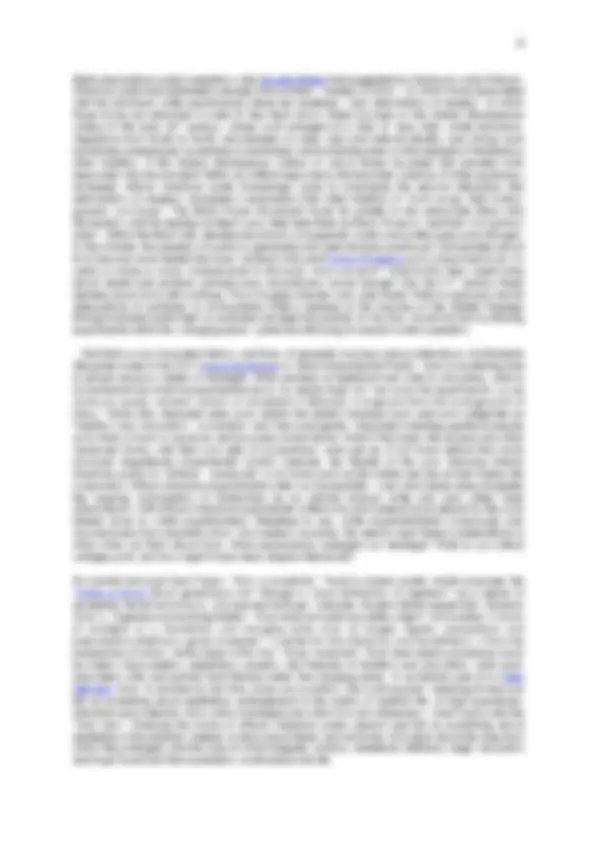
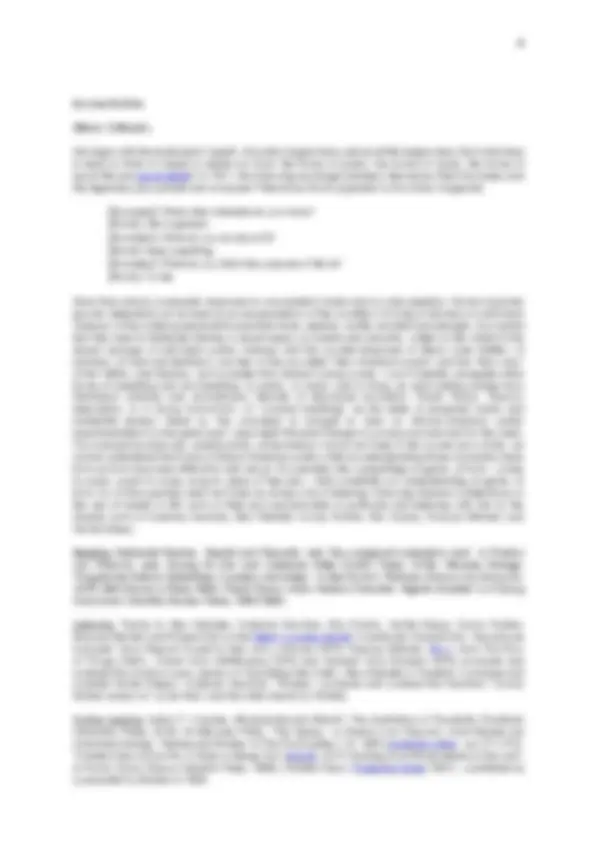
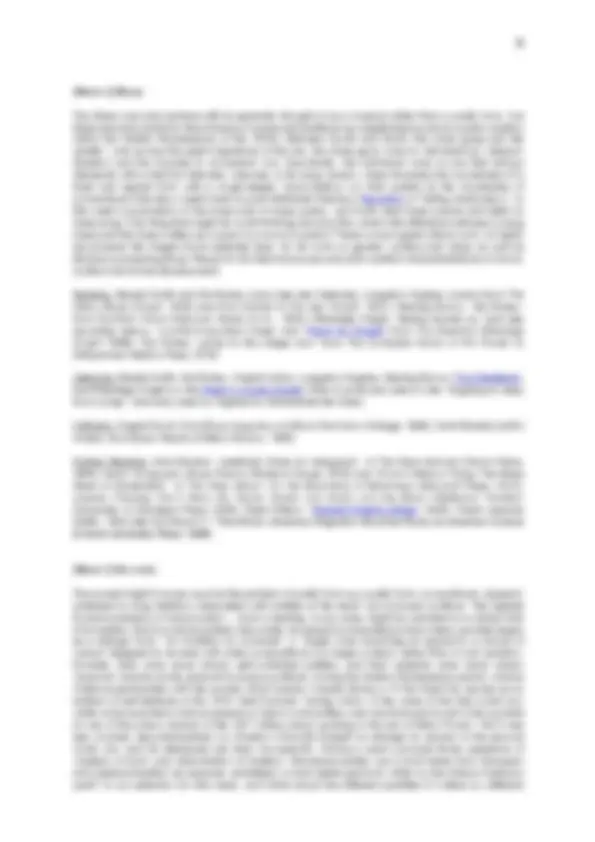
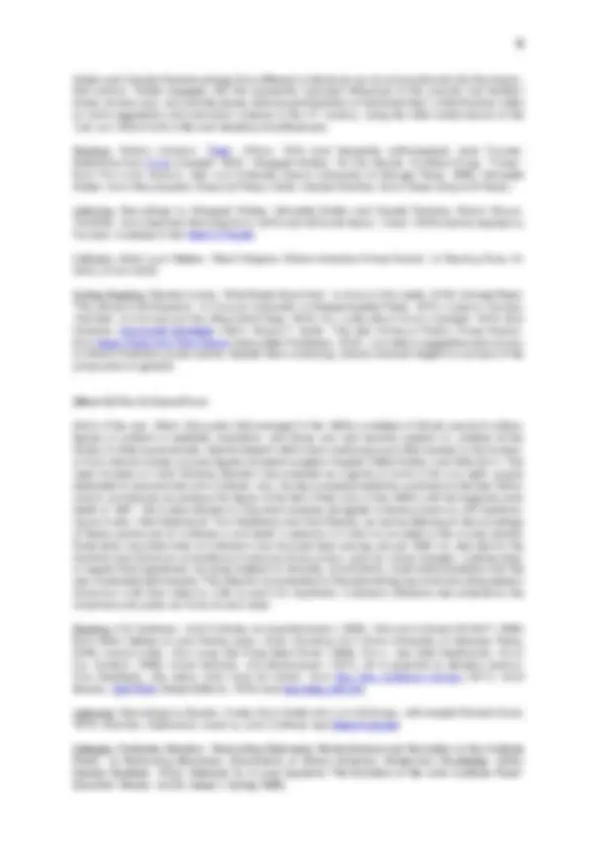
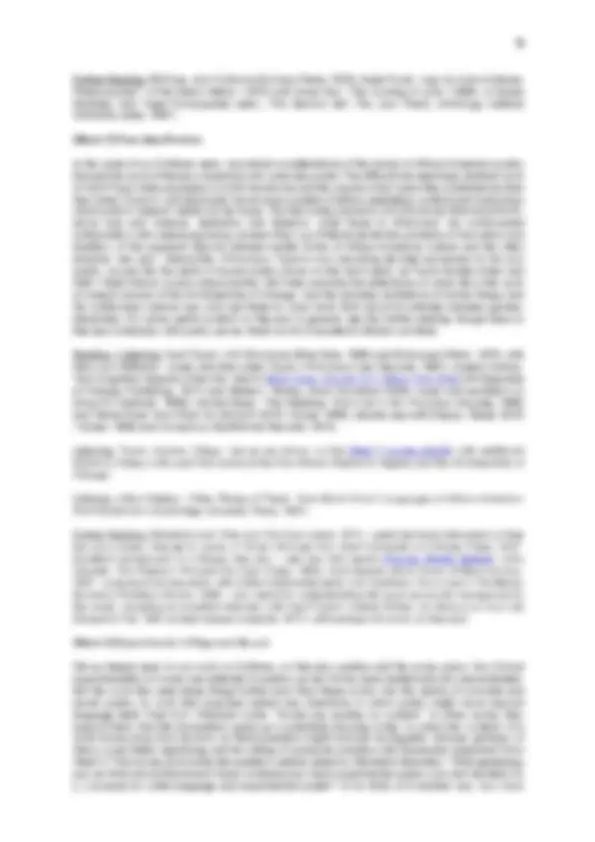
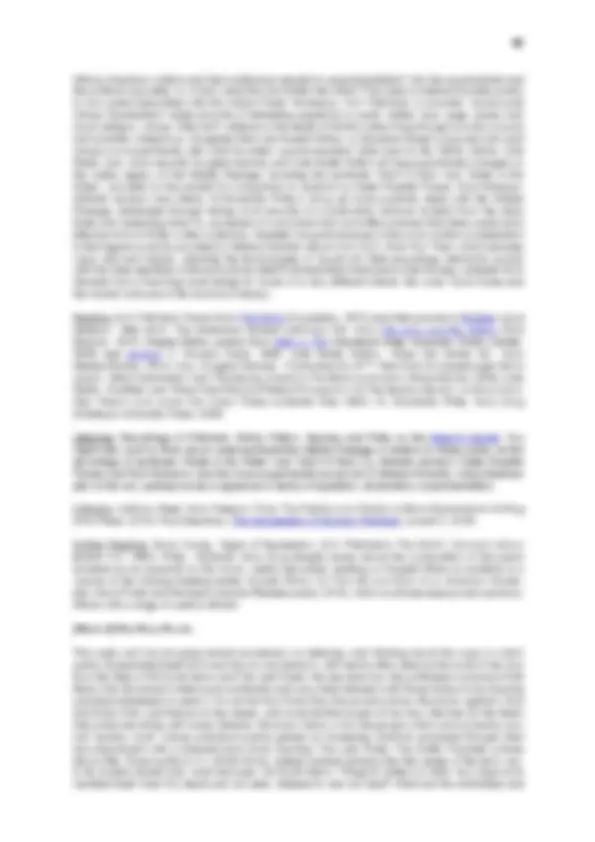


Study with the several resources on Docsity

Earn points by helping other students or get them with a premium plan


Prepare for your exams
Study with the several resources on Docsity

Earn points to download
Earn points by helping other students or get them with a premium plan
Community
Ask the community for help and clear up your study doubts
Discover the best universities in your country according to Docsity users
Free resources
Download our free guides on studying techniques, anxiety management strategies, and thesis advice from Docsity tutors
The role of form in African American poetry, focusing on the tactics of 'mastery' and 'deformation' introduced by Houston Baker. how African American poets have addressed the problem of white supremacy through these two approaches and provides examples of key works and poets. The document also includes suggestions for further reading.
Typology: Lecture notes
1 / 12

This page cannot be seen from the preview
Don't miss anything!







Image from Douglas Kearney, over deluxe af (2018) Table of Contents General Introduction to Course 2 Introduction to the Question of Form 2 Course Outline 4 Weekly breakdown of reading, with brief introductions to that week’s theme and suggestions for further reading. Week 1 – Breath Week 2 – Blues Week 3 – Sonnets Week 4 – Signifyin’ and The Dozens Week 5 – Prose Poems Week 6 – The Coltrane Poem
Week 7 – Free Jazz Poetics Week 8 – Experiments in Page and Sound Week 9 – Hip-Hop: Roots Week 10 – Hip-Hop: The Twenty-First Century Secondary Reading 12 Some suggestions for secondary reading as a general introduction to the field. Assignment 12 Information about the term’s assignment: one 6,000 word essay. General Introduction to Course Reduced to simplification, distortion, or simply ignored, the forms of African-American poetry have not been well understood. By contrast, this course proposes that a study of those forms has much to tell us about past, present and Future. Beginning with the breath (the fundament) and ending with contemporary hip-hop, this course covers some of these numerous forms, from sonnets to sound poetry, signifyin(g) to prose poems, the blues to free jazz, the dozens to trap, suggesting various through-lines that might enable us to move all the way from Claude McKay to Migos. Through this, we’ll address just some of the many debates throughout the twentieth and twenty-first centuries around, for example, the role of vernacular language, ebonics / AAVE, ‘high’ and ‘low’ speech, tradition and innovation, orality and literacy. Over these ten weeks, we’ll look at (and listen to) poems that challenge conventional distinctions between the ‘mainstream’ and the ‘avant-garde’, the aesthetic and the political, the written and the spoken. This term’s reading forms a sort of anthology of poetry, music and criticism, with the aim to provide a close focus on a relatively small selection of poems, rather than venturing across entire books. Much of this poetry is closely connected to music, and we'll do a good deal of listening , to both poetry and music, throughout: as well as set reading, each week also contains around an hour of audio material, provided via a youtube playlist. Please see this as of equal importance to the reading. Some of this poetry can be hard to obtain, and material will be circulated in advance. (A number of out-of-print texts are available at the ECLIPSE web archive, “a free on-line archive focusing on digital facsimiles of the most radical small-press writing from the last quarter century” – in particular, material relating to the Black Radical Tradition: http://eclipsearchive.org/projects/).) Each week I’ll get a number of you to give presentations (not assessed) on that session’s material in order to initiate discussion. The course will be assessed by one 6,000 word essay at the end of term. Finally, a Content Warning: Please be aware that some of the texts and audio we will be studying contain inflammatory language and material, including racial and sexual slurs. Introduction to the Question of Form In 1979, poet and activist Audre Lorde famously stated that “ the master’s tools will never dismantle the master’s house. They may allow us temporarily to beat him at his own game, but they will never enable us to bring about genuine change. ” Ever since the ‘official’ birth of African-American poetry, often dated to the work of Phillis Wheatley, Jupiter Hammon and others, who worked in the borrowed forms (or ‘master’s tools’) of European poetry, this has been a vexed and important issue. While Wheatley and Hammon worked largely within the presuppositions, both formal and moral, that came with those tools, theirs was not the only poetic course to be taken. Consider the emergence of forms such as work songs, field hollers, blues, gospel and jazz, which often served as “survival codes” / “survival forms”, allowing for the expression of defiance, mockery, humour, sorrow and survival. As 20 th^ century poet Tom Weatherly wrote: “ That’s our poetry, our tradition, […] and if you put it down, you put down most of what is good in American song lyric and poetry, and you put down most of the base I build on .” Yet this tradition was not generally acknowledged as ‘poetry’ per se for quite some, and African-American poets from Wheatley two the present have often faced the twin dilemmas of either exclusion from or forced inclusion in a Eurocentric poetic tradition.
Course Outline [Week 1] Breath. We begin with the fundament: breath. All poetry begins here, just as all life begins here. But what does it mean to think of breath in relation to form: the forms of poetry, the forms of music, the forms of social life and social death? In 1971, the following exchange between interviewer Pearl Gonzalez and the legendary jazz pianist and composer Thelonious Monk appeared in Downbeat magazine.
[Monk]: Life in general. [Gonzalez]: What do you do about it? [Monk]: Keep breathing. [Gonzalez]: What do you think the purpose of life is? [Monk]: To die. More than simply a sarcastic response to a journalist’s bland and by-rote question, Monk’s typically gnomic statement can be read as an encapsulation of the condition of living in the face of anti-black violence, of the white supremacist forces that choke, restrain, muffle, smother and strangle. Our central text this week is Nathaniel Mackey’s recent essay on breath and precarity, written in the midst of the recent upsurge of anti-black police violence and the counter-response of Black Lives Matter, of activism, of riots and fightback, but also of the so-called ‘New American poetry’ and the ‘New Jazz’ of the 1960s. Like Mackey, we’ll consider Eric Garner’s dying words, ‘I can’t breathe’ alongside other forms of breathing and not breathing, in poetry, in music, and in living, as well a telling phrase from Martinican clinician and revolutionary theorist of decolonial revolution, Frantz Fanon. Fanon’s description, in A Dying Colonialism , of “combat breathing” as the state of perpetual bodily and existential tension faced by the colonised is brought to bear on African-American poetic experimentalism by the great poet / playwright Ntozake Shange in our second main text for the week. Our principal sources are, paradoxically, prose essays, but as we’ll see in the course as a whole, we cannot understand the forms of African American poetry without understanding those moments where form as form becomes difficult to talk about. It’s precisely the overspillings of genre, of form – prose to poem, poem to song, song to piece of free jazz – that constitute our understanding of genre, of form. So in this opening week we’ll also be doing a lot of listening, following Mackey’s reflections on the use of breath in the work of (free) jazz saxophonists in particular and listening with him to the diverse work of Coleman Hawkins, Ben Webster, Sonny Rollins, Eric Dolphy, Roscoe Mitchell, and Archie Shepp. Reading: Nathaniel Mackey, ‘Breath and Precarity’ and ‘the overghost ourkestra’s next’, in Poetics and Precarity , eds. Myung Mi Kim and Cristanne Miller (SUNY Press, 2018); Ntozake Shange, ‘Programme Note to Sassafrass, Cypress, and Indigo’, in See No Evil: Prefaces, Essays and Accounts, 1976 - 1983 (Momo’s Press 1984); Frantz Fanon, trans. Haakon Chevalier ‘Algeria Unveiled’ in A Dying Colonialism (Monthly Review Press, 1959/1965). Listening: Tracks by Ben Webster, Coleman Hawkins, Eric Dolphy, Archie Shepp, Sonny Rollins, Roscoe Mitchell, and Roland Kirk on the Week 1 course playlist. In particular: Roland Kirk, ‘Saxophone Concerto’ from Prepare Thyself to Deal with a Miracle (1973); Roscoe Mitchell, ‘No.1’, from The Flow of Things (1991), ‘Chant’ from Wildflowers (1976) and ‘Nonaah’ from Nonaah (1976) (compare and contrast Eric Dolphy’s solo version of ‘God Bless the Child’); Ben Webster’s ‘Tenderly’ (compare and contrast Archie Shepp), Coleman Hawkins’ ‘Picasso’ (compare and contrast the Hawkins / Sonny Rollins version of ‘Lover Man’ and the other tracks by Rollins). Further reading: Ashon T. Crawley, Blackpentecostal Breath: The Aesthetics of Possibility (Fordham University Press, 2016); M.NBourse Philip, ‘The Ga(s)p’, in Poetics and Precarity ; Amiri Baraka (as Johannes Koenig), ‘Names and Bodies’ in The Floating Bear , 24, 1962 (available online – pp.271- 273 ), ‘Charles Olson & Sun Ra: A Note on Being Out’ (lecture, 2017)‘Hunting is not those heads on the wall’, in Home: Social Essays (Akashic Press, 1966) ; Charles Olson, Projective Verse (1951) – published as a pamphlet by Baraka in 1959.
[Week 2] Blues The Blues was (and perhaps still is) generally thought of as a musical rather than a poetic form, but Blues became central to the embrace of vernacular traditions as a legitimate source for poetic creation within the Harlem Renaissance of the 1920s. Between South and North, the chain gang and the ‘ghetto’, and across the great migrations of the era, the blues gave voice to individual joy, despair, isolation and the impulse to movement: but, importantly, the individual voice is one that always intersects with collective histories. Likewise, in its sung version, blues traverses the boundaries of a fixed and regular form with a rough-edged, improvisatory cry that pushes at the boundaries of conventional articulacy (useful here is poet Nathaniel Mackey’s figuration of ‘telling inarticulacy’). In this week’s exploration of the blues and of blues poetry, we’ll both read blues poems and listen to blues song. One thing that might be worth thinking about is this: what’s the difference between a sung blues and the blues written as a poem in a book of poetry? There’s much great critical work: I’d highly recommend the Angela Davis selected here, for its work on gender, politics and class; as well as Baraka’s pioneering Blues People for its historical scope and pitch-perfect characterisations of mood, context and formal development. Reading: Bessie Smith and Ma Rainey lyrics (see also listening); Langston Hughes, poems from The Weary Blues (Knopf, 1926 ) and Fine Clothes to the Jew (Knopf, 19 27); Sterling Brown, ‘Ma Rainey’ from Southern Road (Harcourt, Brace & Co., 1932); Etheridge Knight, ‘feeling fucked up’ (and see recording below), ‘con/tin/u/way/shun blues’ and ‘Poem for Myself’ from The Essential Etheridge Knight (1986); Pat Parker, ‘going to the bridge now’ from The Complete Works of Pat Parker (A Midsummer Night’s Press, 2016) Listening: Bessie Smith, Ma Rainey, Virginia Liston, Langston Hughes, Sterling Brown, Tom Weatherly, and Etheridge Knight on the Week 2 course playlist. Note in particular Liston’s line “laughing to keep from crying”, famously used by Hughes to characterise the blues. Criticism: Angela Davis, from Blues Legacies and Black Feminism (Vintage, 1999); Amiri Baraka (LeRoi Jones), from Blues People (William Morrow, 1963) Further Reading: Amiri Baraka, ‘Leadbelly Gives an Autograph’, in The Dead lecturer (Grove Press, 1964); Kevin Young (ed.), Blues Poems (Random House, 2003) and ‘It Don’t Mean a Thing: The Blues Mask of Modernism’, in The Grey Album: On the Blackness of Blackness (Graywolf Press, 2012); Lorenzo Thomas, Don’t Deny My Name: Words and Music and the Black Intellectual Tradition (University of Michigan Press, 2008); Ralph Ellison, ‘Richard Wright’s Blues’ (1945), Farah Jasmine Griffin, “Who Set You Flowin’?”: The African-American Migration Narrative Race and American Culture (Oxford University Press, 1996) [Week 3] Sonnets The sonnet might in some ways be the emblem of poetic form qua poetic form: conventional, classical, bolstered by long tradition, associated with matters of the heart, not obviously political, “the highest formal expression of lyrical poetry”…Such a reading, in any case, might be prevalent in a certain kind of formalism. But it would be entirely inaccurate. As several commentators have noted, sonnets began as a dialogic form: “an invitation to converse”, a “single voice launching an appeal to a chorus of voices” designed to be read with other compositions in a larger context, rather than in lyric isolation. Sonnets, then were never simply self-contained entities, and their subjects were never simply ‘personal’ (insofar as the personal is always political). During the Harlem Renaissance period, various writers experimented with the sonnet. Most notably, Claude McKay’s ‘If We Must Die’ served as an anthem of self-defense in the 1919 ‘Red Summer’ during which, in the wake of the first world war, white mobs launched a furious assault on black communities, and was famously found in the pockets of one of the prison martyrs of the 1971 Attica prison uprising in the era of Black Power. Yet it was also invoked, decontextualized, by Winston Churchill (himself no stranger to racism) in the second world war, and its references are fairly non-specific. McKay’s poem prompts those questions of ‘mastery of form’ and ‘deformation of mastery’ introduced earlier: can a form taken from European and classical tradition be renewed, revitalised, or even destroyed form within by the African American poet? In our selection for this week, we’ll think about the different qualities of writers by different
combines the vernacular sense of signifyin’, as defined by Major, with linguist Ferdinand de Saussure’s distinction between the ‘signifier’ (the word used to indicate something) and the ‘signified’ (that which is indicated) to coin signifyin(g). The silent, bracketed ‘g’ in Gates’ formulation – the sign that marks the fusion of the word’s two senses – is indicative of his concept: a wordplay that uses indirect verbal strategies to exploit the gap between literal and figurative meanings of words. For Gates, signifyin(g) marked one of the ways that African Americans have resisted white interpellation and violence through humorous inversion and invention: something like pastiche, but not pastiche, like parody, but not parody, a term whose lack of precise definition is part of its strength. Since its publication, Gates’ signifyin(g) has become so ubiquitous within literary criticism of African American writing that it can seem to signify almost anything in itself, but his essay still repays attention. Finally, it’s worth noting the complex gender politics surrounding signifying. Often yoked to a masculine aesthetic in Black Arts writing, a useful corrective is provided in June Jordan’s poem, which gets to the heart of some of the complex questions of gender, misogyny and suffering that intertwine with the joy, wit and flamboyance of these forms: likewise Robin D.G. Kelley’s essay, provided in the critical reading. Reading: Langston Hughes ‘New Kind of Dozens’ from Simple Stakes a Claim (Rinehart & Company, 1957 – originally in Chicago Defender , 1955); Ask Your Mama: Twelve Moods for Jazz (Knopf, 1961); H. Rap Brown, from Die N***** Die! The Autobiography of H. Rap Brown (Dial Press, 1969); Amiri Baraka, ‘Word from the Right Wing’, ‘TT Jackson Sings’, from Black Magic (William Morrow, 1969); June Jordan, ‘Getting Down to Get Over (Dedicated To My Mother)’ (1972) from Directed by Desire: The Complete Poems of June Jordan (Copper Canyon Press, 2005); Etheridge Knight, ‘Dark Prophecy: I Sing of Shine’, from The Essential Etheridge Knight (University of Pittsburgh Press, 1986 ); Larry Neal, ‘Negliphcs’ from Black Boogaloo (Journal of Black Poetry Press, 1969) and ‘Shine’ poems from Hoodoo Hollerin’ Bebop Ghosts (Howard University Press, 1974). Listening: Speckled Red (dozens); Rudy Ray Moore and Johny Brooks (Signifying Monkey); Schoolly D (Signifying Rapper); Rudy Ray Moore (Shine) (and compare Leadbelly’s ‘The Titanic’ and Etheridge Knight, ‘I Sing of Shine’), on the Week 4 Course playlist. Criticism: Henry Louis Gates, from The Signifying Monkey: A Theory of African American Literary Criticism (Oxford University Press 1988 ); Robin Kelley, ‘Looking for the “Real” Nigga: Social Scientists Construct the Ghetto’ in Yo’ Mama’s Disfunktional!: Fighting the Culture Wars in Urban America (Beacon Press, 1997 ); Larry Neal, ‘And Shine Swam On’ (1968), from Visions of a Liberated Future: Black Arts movement Writings (Thunder’s Mouth Press, 1988) Further Reading: Zora Neale Hurston, ‘Characteristics of Negro Expression’ (1934); Richard Wright, ‘The Literature Of The Negro In The United States’, in White Man, Listen! (Doubleday, 1957); Claudia Mitchell-Kernan, ‘Signifying, Loud-Talking and Marking’ (1972), in Gena Dagel Caponi (ed.), Signifyin(g), Sanctifyin’, and Slam Dunking (University of Massachusetts Press, 1999). [Week 5] Prose Poems In its simplest form, a prose poem can be defined as poetry with no line breaks. Instead of stanzas, paragraphs; instead of enjambment, the sentence unit. Prose poetry has in general been associated with Modernist experimentation, as poets pushed at the boundaries of what could be considered poetry at all. And, as Modernism, with its capital M, is too often understood as almost solely the realm of (straight) (white) men, so it’s white modernist poets who are often credited with their innovations in the prose poem: from Baudelaire and Rimbaud in the 19th^ century to Gertrude Stein or John Ashbery in the twentieth. Meanwhile, as we’ve seen, in the eyes of white observers, black poets were restricted to either ‘dialect verse’ (damned with a faint, condescending praise that paid no attention to the actually subtlety, beauty and strength of ‘folk forms’ such as the blues) or to imitations of classical European forms. As a result, the African-American prose poem has gone almost completely neglected, and recovering it might help us tell a very different story, both of African-American poetry in all its diverse richness (formal, spiritual, political), and of the prose poem itself. The prose poems thus forms an important testing point for our observations as a whole on poetry and form. We’ll also bear in mind Elizabeth Alexander’s astute observations, cited earlier, of the relation between experimentation and tradition in African-American poetry, asking: just how ‘modern’ (or modernist) are these forms? What’s their relation to dialect? To speech? The first selections (Fenton Johnson, Jean Toomer and Margaret Walker) in the main concern the American South, one possible source of reflection; the latter, Harryette
Mullen and Claudia Rankine emerge from different contexts as we move towards and into the twenty- first century. Mullen engages with the apparently opposed influences of the popular oral tradition (blues, dozens, jazz, rap) and the dense verbal experimentation of Gertrude Stein, while Rankine writes on micro-aggression and anti-black violence in the 21st^ century, using the often-noted device of the ‘lyric you’ that is both writer and reader(s) simultaneously. Reading: Fenton Johnson, ‘Tired’, Others , 1919 (and frequently anthologized); Jean Toomer, Selections from Cane (Liveright, 1923) ; Margaret Walker, ‘For My People, ‘Southern Song’, ‘Today’, from This is My Century: New and Collected Poems (University of Georgia Press, 1989); Harryette Mullen, from Recyclopedia (Graywolf Press, 2006); Claudia Rankine, from Citizen (Graywolf Press,) Listening: Recordings by Margaret Walker, Harryette Mullen and Claudia Rankine; Marion Brown, ‘Karintha’, from Geechee Reccollections (1973) and Gil Scott-Heron, ‘Cane’ (1978) (tracks inspired by Toomer). Available in the Week 5 Playlist. Criticism: Aldon Lynn Nielsen, ‘Black Margins: African-American Prose Poems’, in Reading Race: An Arena of Act ( 2000 ) Further Reading: Stephen Jonas, ‘What Made Maud Hum’, in Arcana (City Lights, 2019); Ishmael Reed, ‘The Ghost in Birmingham’, in Conjure (University of Massachusetts Press, 1972 ); Lorenzo Thomas, ‘Hat Red’, in Chances are Few (Blue Wind Press, 1979); N.J. Loftis, Black Anima (Liveright, 1973); Bob Kaufman, Abomunist Manifesto (1951); Robert T. Kerlin, ‘The New Forms of Poetry: Prose Poems’, from Negro Poets And Their Poems (Associated Publishers, 1923) – provides a suggestive early survey of African-American prose poems, despite their continuing, almost universal neglect in surveys of the prose poem in general. [Week 6] The Coltrane Poem Much of the new, Black Arts poetry that emerged in the 1960s consisted of tribute poems to elders, figures of political or aesthetic inspiration, and those who had recently passed on, whether at the hands of white supremacists, internal dissent within black radical groups (often spread by the former), or from natural causes: popular figures included Langston Hughes, Billie Holiday, and Malcolm X. This week focuses on what Kimberly Benston has analysed as a genre (or form) in its own right: poems dedicated to saxophonist John Coltrane, who, having conquered addiction problems in the late 1950s, rose to prominence as perhaps the figure of the New (Free) Jazz of the 1960s until his tragically early death in 1967. We’ll place Benston’s important analysis alongside Coltrane poems by AB Spellman, Jayne Cortez, Haki Madhubuti, Tom Weatherly and Amiri Baraka, as well as listening to the soundings of these poems and to Coltrane’s work itself, a selection of which is provided in the course playlist. Particularly important here is Coltrane’s turn towards freer playing around 1965 (i.e. less tied to the rhythmic and harmonic conventions of previous forms of jazz, such as ‘chord changes’, walking bass, or regular time signatures, focusing instead on atonality, polyrhythms, multi-instrumentalism and the use of extended techniques). This direction is cemented by the astonishing big-band recording session Ascension (with liner notes by critic & poet A.B. Spellman). Coltrane’s influence also extends to the musicians and poets we’ll look at next week. Reading: A.B. Spellman, ‘John Coltrane: an impartial review’ (1965), ‘Did John’s Music Kill Him?’ (1969) from Aldon Nielsen & Lauri Ramey (eds.), Every Goodbye Ain’t Gone (University of Alabama Press, 2006); Jayne Cortez, ‘How Long Has Trane Been Gone’ (1968), Don L. Lee (Haki Madhubuti), ‘Don’t Cry, Scream’ (19 69 ), Sonia Sanchez, ‘a/Coltrane/poem’ (1972), all in appendix to Benston (below); Tom Weatherly, ‘the yellow brick road (for trane)’, from Mau Mau American Cantos ( 1971); Amiri Baraka, 'AM/TRAK (Nadja Editions, 1979) (and recording with Air). Listening: Recordings by Baraka, Cortez (from Celebration and Solitudes , with bassist Richard Davis, 1974), Sanchez, Madhubuti, music by John Coltrane: see Week 6 playlist. Criticism: Kimberley Benston, ‘Renovating Blackness: Remembrance and Revolution in the Coltrane Poem’, in Performing Blackness: Enactments of African-American Modernism (Routledge, 2000); Sascha Feinstein, ‘From ‘Alabama’ to A Love Supreme : The Evolution of the John Coltrane Poem’ ( Southern Review , Vol.32, Issue 2, Spring 1996).
African American writers and their audiences reacted to experimentalism? Are the experimental and the political opposites, or, in fact, does the one further the other? This week’s material includes poetry by two poets associated with the Umbra Poets’ Workshop, N.H. Pritchard, a concrete / sound poet whose ‘transrealism’ raises all sorts of interesting questions on spirit, matter, race, page, space; and Lloyd Addison, whose ‘After MLK’ reflects on the death of Martin Luther King through an array of puns and scientific metaphors. Alongside them are Russell Atkins, a Cleveland-based composer and poet whose own experiments with what he called ‘psychovisualism’ date back to the 1950s: Atkins, Julia Fields, and, more recently Douglas Kearney and Julie Ezelle Patton all ring experimental changes on the watery legacy of the Middle Passage, including the spirituals ‘Didn’t It Rain’ and ‘Wade in the Water’, provided on the playlist for comparison in versions by Sister Rosetta Tharpe, Paul Robeson, Mahalia Jackson and others. M.NourbeSe Philip’s Zong yet more explicitly deals with the Middle Passage, addressed through taking court records of a particularly heinous incident from the slave trade and subjecting them to processes of (un)voiced and (un)written erasure that takes particularly effective form in Philip’s often collective, ritualistic live performances of the work; further consideration in that regard could be provided by Matana Roberts’ album Coin Coin: River Run Thee , which samples voice, text and melody, blending the technologies of ‘sound art’ (field recordings, electronic sound) with the older signifiers of the saxophone (itself a transplanted instrument of technology, adapted from Adolphe Sax’s marching band design to music of a very different intent), the voice, hymn tunes and the broken rumours of the horrors of slavery. Reading: N.H. Pritchard, Poems from The Matrix (Doubleday, 1970) and other poems on Eclipse; Lloyd Addison, ‘After MLK: The Marksman Marked Left-Over Kill’, from The Aura and the Umbra (Paul Breman, 1970); Russel Atkins, poems from Here in The (Cleveland State University Poetry Center,
differences between this week’s tracks and the contemporary hip-hop with which many of you may be familiar? How does this material compare to the earlier use of blues and ‘folk’ material by poets such as Langston Hughes? And how does looking at work like this help us to make a bridge between the historical literary / musical forms of the Harlem Renaissance and Black Arts eras of the earlier twentieth century and our present climate: the world of hip-hop, trap music, mumble rap and the digital, globalised era (to be looked at next week)? The tracks this week are aural and available on the Week 9 playlist. Reading / Listening: Charles Mingus, ‘Freedom’ from Mingus x 5 (Impulse, 1961); Amiri Baraka, from It's Nation Time (Black Forum, 1972); Nikki Giovanni (with the New York Community Choir), ‘Ego- Tripping’, from Truth Is On Its Way (Right-On Records, 1971); Sarah Webster Fabio, from Jujus: Alchemy of the Blues (Smithsonian Folkways Recordings, 1975); The Last Poets, from The Last Poets (Douglas, 1970 ); Gil Scott-Heron, Small Talk at 125th^ and Lenox (Flying Dutchman, 1971); The Watts Prophets, from Rappin’ Black in a White World (ALA Records, 1971); Gylan Kain, The Blue Guerilla (Juggernatu Records, 1970 – sampled by KMD); Lightnin’ Rod, Hustler’s Convention (United Artists Records, 1973 and later version by Grandmaster Melle Mel and the Furious Five). Criticism: Imani Perry, from Prophets of the Hood: Politics and Poetics in Hip Hop (Duke University Press, 2004) [Week 10] Hip-Hop: The 21st Century Moving into the twenty-first century, in this final week we’ll be looking at some pieces which riff off Gwendolyn Brooks’ iconic ‘We Real Cool’, transplanting it to the present day, by poet Quenton Baker and rapper Mick Jenkins; and excerpts from Simone White’s recent book-length prose-poem-essay Dear Angel of Death , which, informed by recent thinking of anti-blackness and social death (Afro- Pessimism, Black Lives Matter, police violence) and the emergence of trap music, meditates on embodiment, fungibility and the ecstatic nihilism of rappers like Future. In an era which has seen not only the first black president but, in Ta Nehisi-Coates’ words, the ‘first white president’ in immediate succession, White meditates on rappers Future and Vince Staples’ uneasy negotiation between hedonism and nihilism, between the trap house and the White House, the lumpen / ‘bad’ and the ‘boujee’. Critic Simon Reynolds has argued that Future’s use of autotuned revamps and rejuvenates the blues impulse, “reinvent[ing] the blues for the 21st^ century”, as technology paradoxically provides a way into the human grain of the (de)humanised voice, the cry that chafes against its limits, the formlessness against form. Politics is here too, of course, as the focus on the acquisition of wealth, on drug dealing and material attainment, combined with the insistence on ‘keeping it real’, on the realities of urban experience in the face of gang and police violence, simultaneously seems to glorify and laments the conditions of its making. Richard Majors’ and Janet Billson’s influential coinage ‘the cool pose’ might be helpful here. As per last week’s class, we might ask: what similar and differing attitudes can we trace to the earlier uses of ‘folk’ or ‘street’ speech practices? What does it mean to think of hip-hop as poetry? For different takes on the melancholy and malaise of individual struggles with addiction, politics, mental health and grief, we turn to Earl Sweatshirt’s near-wordless ‘solace’ and his engagement with maternity, fathers, lineage and memory in the experimental video ‘Nowhere Nobody’ parenthood (Sweatshirt’s father was South African Black Arts poet ‘Bra Willie’, Keorapetse Kgositsile; Sweatshirt’s grandmother passed away shortly before ‘solace’ and his father shortly before ‘Nowhere Nobody’). Meanwhile, the album by poet / musician Moor Mother – who has also collaborated with the Art Ensemble of Chicago, featured in Week 7 – links the experimentalism of Week 8 with the sounds of contemporary hip-hop in powerful and sometimes jarring meditations on anti-black violence, memory and pain. Reading: Simone White, from Dear Angel of Death (Ugly Duckling Presse, 2018); Quenton Baker, ‘Transient (2)’ from This Glittering Republic (Willow Books, 2016) Listening: Tracks on Week 10 course playlist. Mick Jenkins, ‘Gwendolyn’s Apprehension’, from Pieces of a Man (2018) (with reference to Gwendolyn Brooks, ‘We Real Cool’); Earl Sweatshirt, Nowhere Nobody (video, 2018), Solace EP (2015); Future, ‘I Serve the Base’, from DS2 (2015); Moor Mother (Camae Aweya), Fetish Bones ( 2019 ); Vince Staples, ‘Blue Suede’ from Hell Can Wait EP (2014), ‘norf norf’ from Summertime ’06 (20); also TI (for the origin of trap), Migos, ‘Bad and Boujee’, 21 Savage, and more Future.